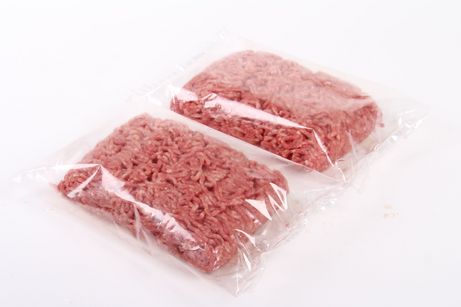End-to-end process from processing to the flow pack
- Подразделение предприятия Системы набивки и порционирования
- Установлено на 02.09.2020
- Все новости и мероприятия
End-to-end process from processing to the flow pack
Sustainable packaging solution
The food production industry, and especially all the sector of sausage and meat processing, is in a state of change when it comes to the packing of its products. Sustainable packaging solutions, preferably recyclable and as climate-neutral as possible, are gaining in importance. At the same time, the product needs to be safe, storable, easy to transport and appealing to the consumer in terms of appearance and texture. One type of packaging that is becoming increasingly popular in this respect is the flow pack. At a weight of approx. 5 grams compared to a tray with sealing film of approx. 15 grams, the flow pack helps save close to two thirds of plastic. As a result, products such as minced meat portions, and also burgers, can be increasingly found on the self-service shelves of large discounters packed in flow packs.
All Handtmann production solutions come equipped with an interface for safe handover to the downstream packaging solution. This also includes flow pack systems, often also referred to as flow wrap or pillow bag. In minced meat production, this process is very similar to that of conventional production. The minced meat for packaging in flow packs is produced on paper, i.e. in the usual manner as for production into trays. With this type of production, the minced meat portions are passed on as single portions with a certain minimum spacing to the inlet belt of the packaging machine, after having been portioned and cut by the Handtmann minced meat portioner and the optional Handtmann weighing system. The minimum spacing is ensured by corresponding differences in speed. For example, if a portion is ejected in the production process by the Handtmann weighing system, this is noted by coordinated interfaces and taken into account in the downstream process so that no empty packages are produced and no packaging material is wasted. With the integration of the Handtmann WS 910 weighing system, checking, monitoring and weight control of production as well as ejecting portions that are too light or too heavy after the portioning and forming process and before packaging are ensured. The digital Handtmann Line Control (HLC) solution controls the communication of the entire line. Thanks to the intelligent and coordinated start/stop operation, no portions are rejected when the line starts and stops, which reduces handling work and costs. The intelligent line control via HLC also allows the operating personnel to start and stop the entire line as a complete system from all operating positions, thus enabling an efficient workflow.

[Translate to Russisch:] Minced meat portion in flow pack
Packing sensitive products in flow packs is quite a challenge. Different sealing technologies are possible, depending on the product properties and the selected foil. Excellent sealing quality and a gentle handover process are decisive for durability and appearance of the product in the flow pack. By deliberately “overblowing” the packs, they are filled with gas to such an extent that the packs can be stacked like pillows, without the minced meat portions actually lying on top of each other, but always with a protective layer of gas in between. The packaging’s “grip protection” function is also largely ensured by this overblowing of the flow pack packaging. The flow pack is an interesting alternative for packing minced meat, as the product is only consumed after it has been prepared. However, despite all its advantages, this type of packaging is still at a disadvantage compared to tray packaging when it comes to “mechanical” protection of the product. Yet, flow packs will most certainly be among the packaging technologies of the future. On the one hand, because of the significant cost reduction for the producer, as foil is considerably less expensive than any tray packaging, and on the other hand because foil on rolls requires a lot less space and effort for logistics, storage and transport compared to empty trays. The future belongs to flow pack packaging, or flow packs, primarily for reasons of sustainability: the reduction in the amount of plastic compared to conventional plastic trays is considerable and the use of mono-materials for the flow pack allows the full recycling of this type of packaging. Another positive side effect are CO2 savings due to the more compact and space-saving transport of the packaging material, both as foil on a roll and as packed product at the point of sale.

![[Translate to Russisch:] handtmann-ulma-minced-meat-line Minced Meat Line](/fileadmin/_processed_/2/4/csm_handtmann_ulma_328209899d.png)